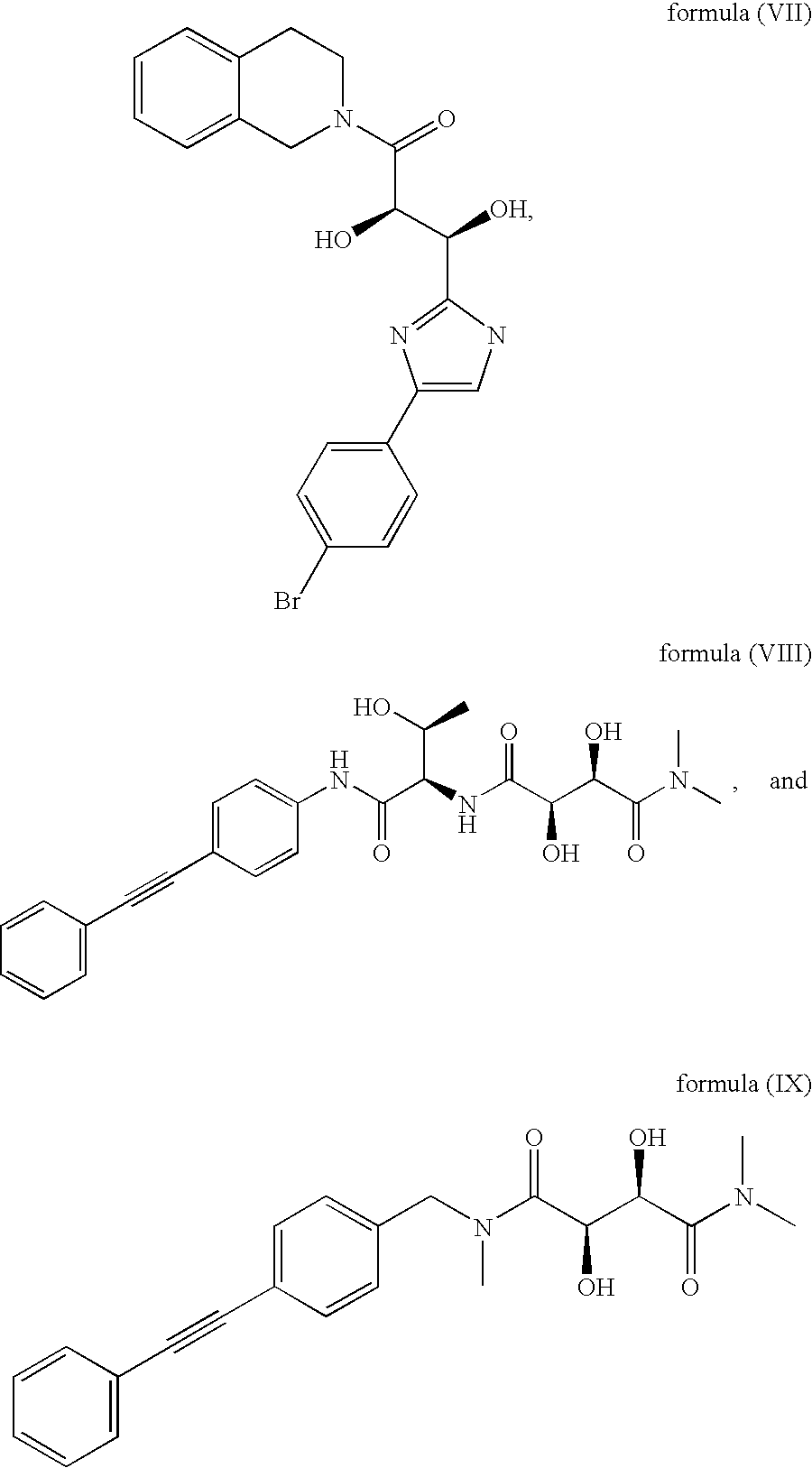Compounds for the treatment of inflammatory disorders and microbial diseases
a technology of inflammatory disorders and functional compounds, applied in the field of tartaric acid functional compounds, can solve the problems of reducing the sensitivity of bacteria to other antibiotics, inhibiting the biosynthesis of lipids, and deficient mechanical properties of cartilage,
- Summary
- Abstract
- Description
- Claims
- Application Information
AI Technical Summary
Benefits of technology
Problems solved by technology
Method used
Image
Examples
example 1
[0247]
Part A:
[0248] To a stirred solution of L-tartrate dimethylester (1) (29.8 g, 136 mmol) in methanol (60 mL) at 0° C. (ice-bath) was added a solution of potassium hydroxide (6.9 g, 123 mmol) in water (20 mL) over 30 minutes. The reaction mixture was stirred at room temperature for 3 hours. The volatiles were removed in vacuo, water (40 mL) was added and the basic solution washed with diethyl ether (30 mL×3). The basic solution was acidified to pH 2.0 with 6N HCl, saturated with solid sodium chloride and the product extracted into diethyl ether (40 mL×4). Drying over magnesium sulfate and concentration afforded compound 2 (22.2 g, 79% yield) as a colorless oil.
Part B:
[0249] To a mixture of compound 2 (1.13 g, 5.53 mmol) and O-(7-Azabenzotriazol-1-yl)-N,N,N′,N′-tetramethyluronium hexafluorophosphate (HATU) (3.2 g, 8.3 mmol) in DMF (20 mL) was added amine building block (1.2 equivalents) and diisopropylethylamine (2.89 mL, 16.59 mmol). The reaction mixture was stirred at room ...
example 2
Example 2A
[0252]
Part A:
[0253] To a mixture of 4-iodoaniline (8) (440 mg, 2 mmol), copper iodide (7.6 mg, 0.04 mmol) and dichlorobis(triphenylphosphine)palladium (II) (14 mg, 0.02 mmol) in THF (5 mL) was added phenylacetylene (244.8 mg, 2.4 mmol) and triethylamine (556 uL, 4 mmol). The reaction vessel was flushed with argon, and the reaction mixture stirred at room temperature for 16 hours. LC-MS analysis of the reaction indicated that the reaction was complete. Ethyl acetate (5 mL) was added, and the precipitates removed by passing through a plug of celite. The filtrate was concentrated, and the crude purified by flash column chromatography (SiO2, 6% ethyl acetate in hexanes) to afford compound 9 as a brown solid (321 mg, 82% yield). HPLC-MS tR=1.88 min (UV254 nm); mass calculated for formula C14H11N 193.1, observed LCMS m / z 194.1 (M+H).
example 2b
[0254]
Part A:
[0255] Compound 11 was prepared from 5-iodoindole (10) using the Sonogashira Coupling conditions described in Example 2A, Part A. HPLC-MS tR=2.06 min (UV254 nm); mass calculated for formula C16H11N 217.1, observed LCMS m / z 218.1 (M+H).
PUM
| Property | Measurement | Unit |
|---|---|---|
| Time | aaaaa | aaaaa |
| Time | aaaaa | aaaaa |
| Time | aaaaa | aaaaa |
Abstract
Description
Claims
Application Information
 Login to View More
Login to View More - R&D
- Intellectual Property
- Life Sciences
- Materials
- Tech Scout
- Unparalleled Data Quality
- Higher Quality Content
- 60% Fewer Hallucinations
Browse by: Latest US Patents, China's latest patents, Technical Efficacy Thesaurus, Application Domain, Technology Topic, Popular Technical Reports.
© 2025 PatSnap. All rights reserved.Legal|Privacy policy|Modern Slavery Act Transparency Statement|Sitemap|About US| Contact US: help@patsnap.com



